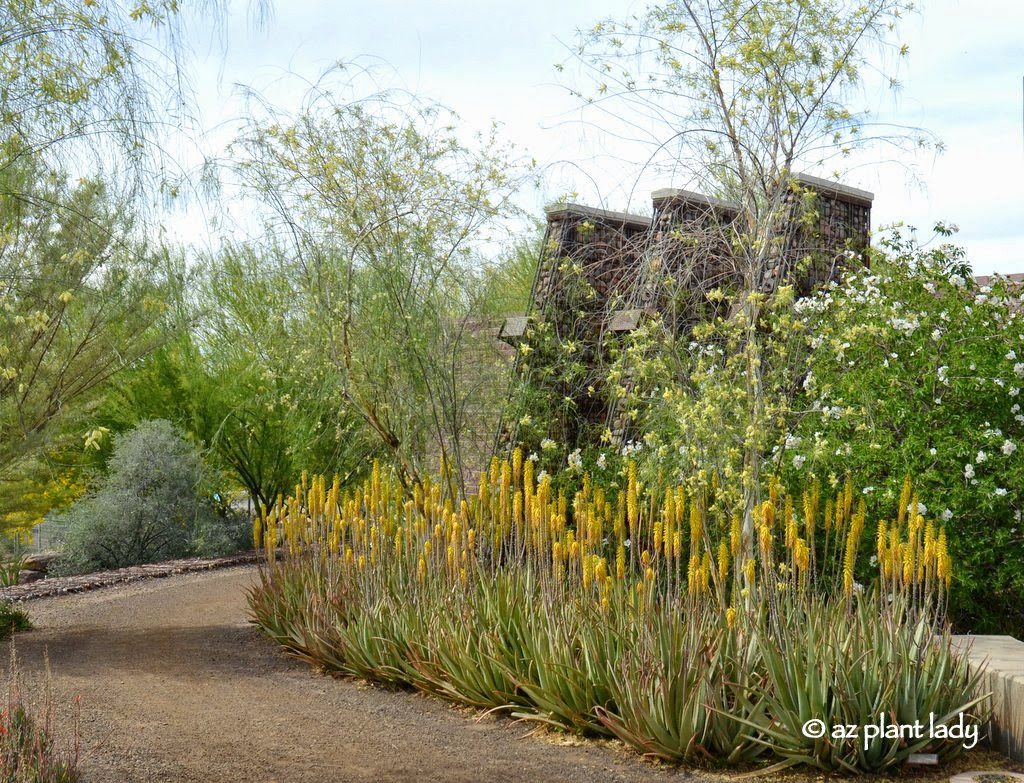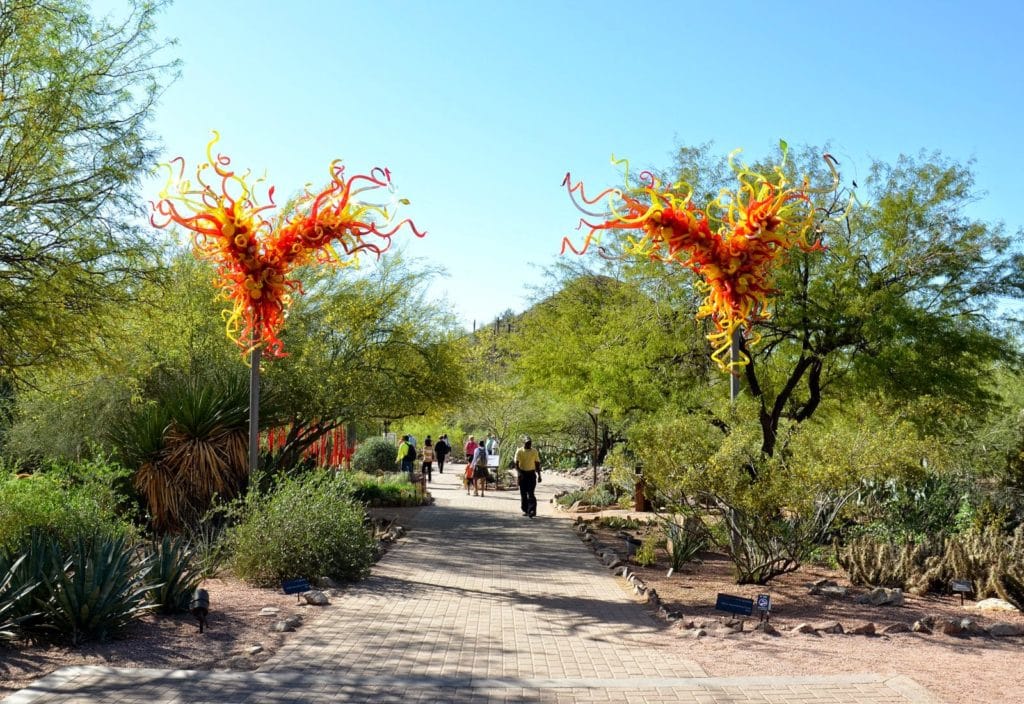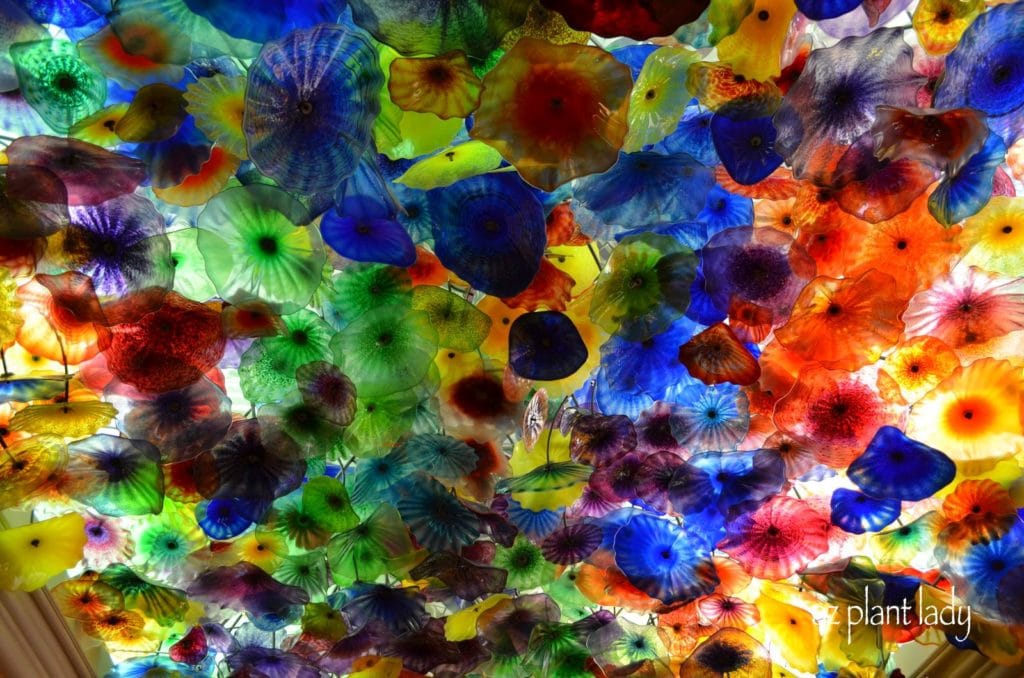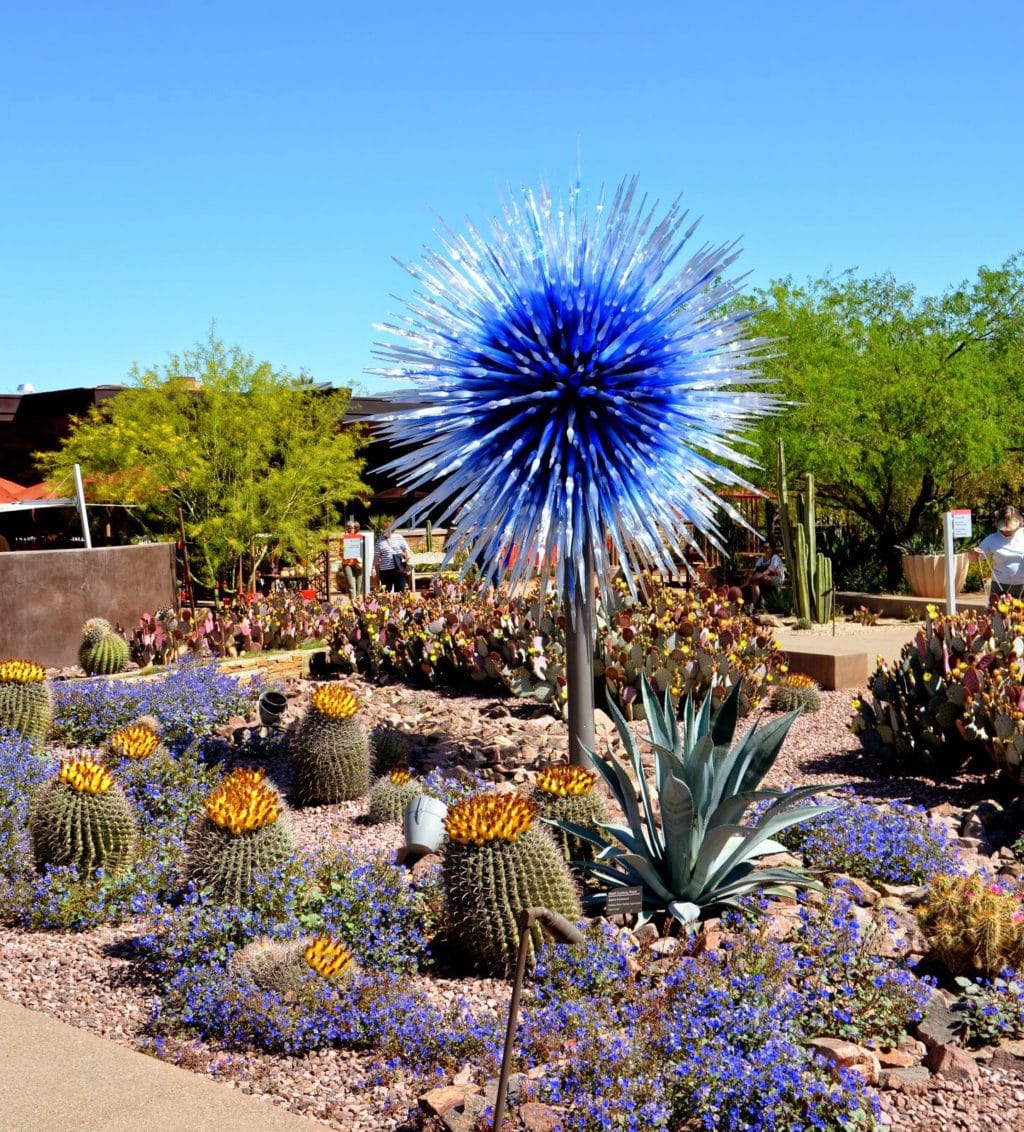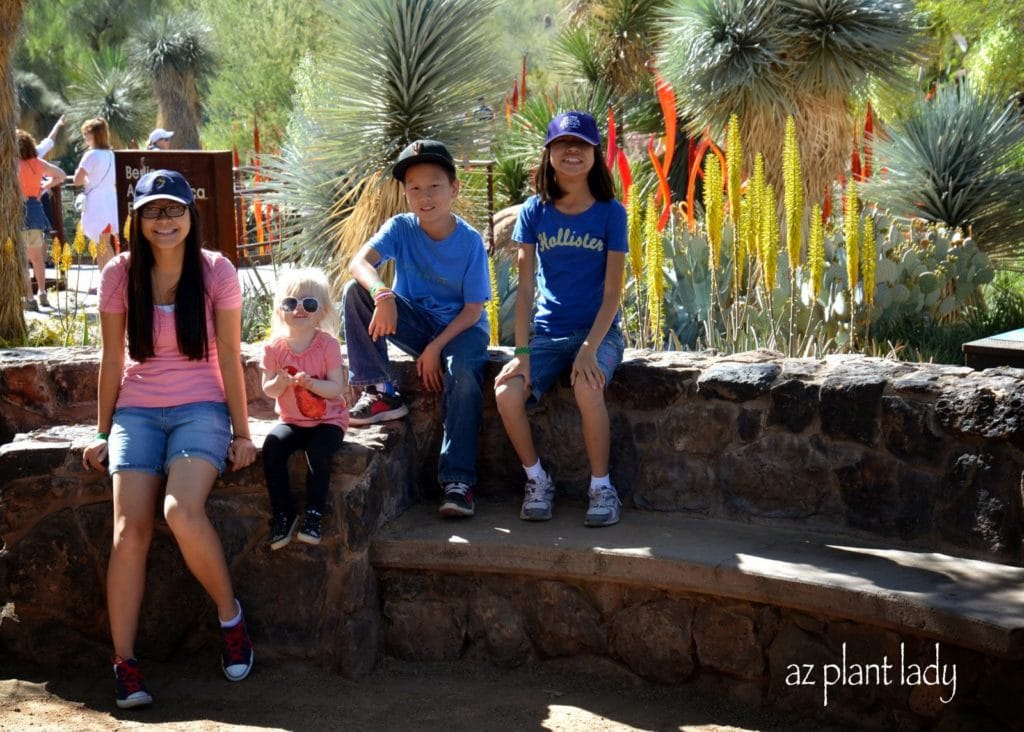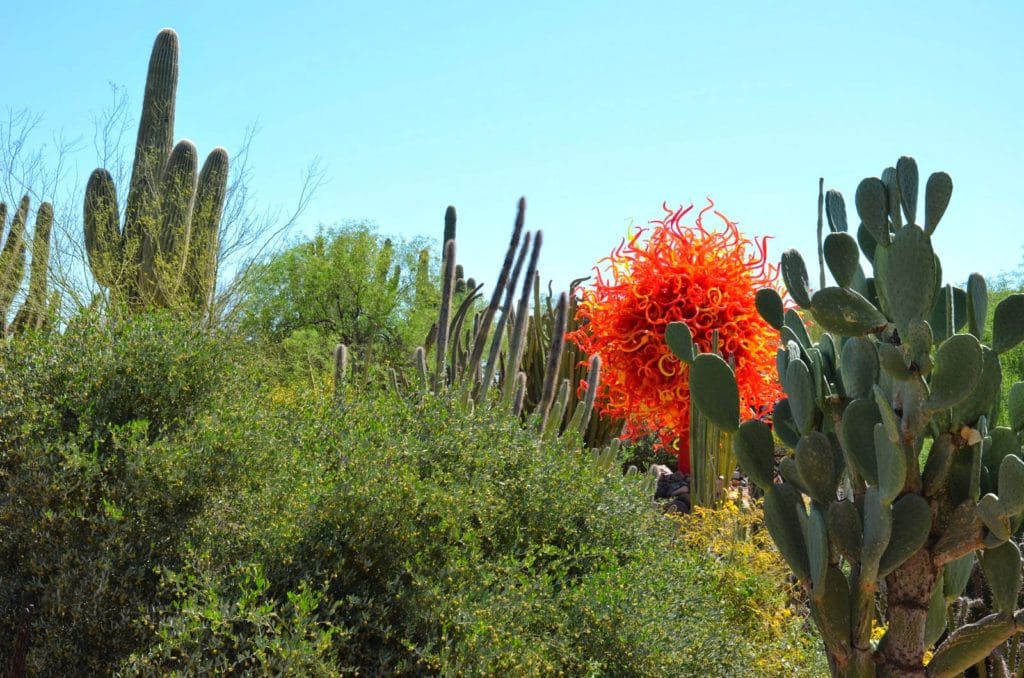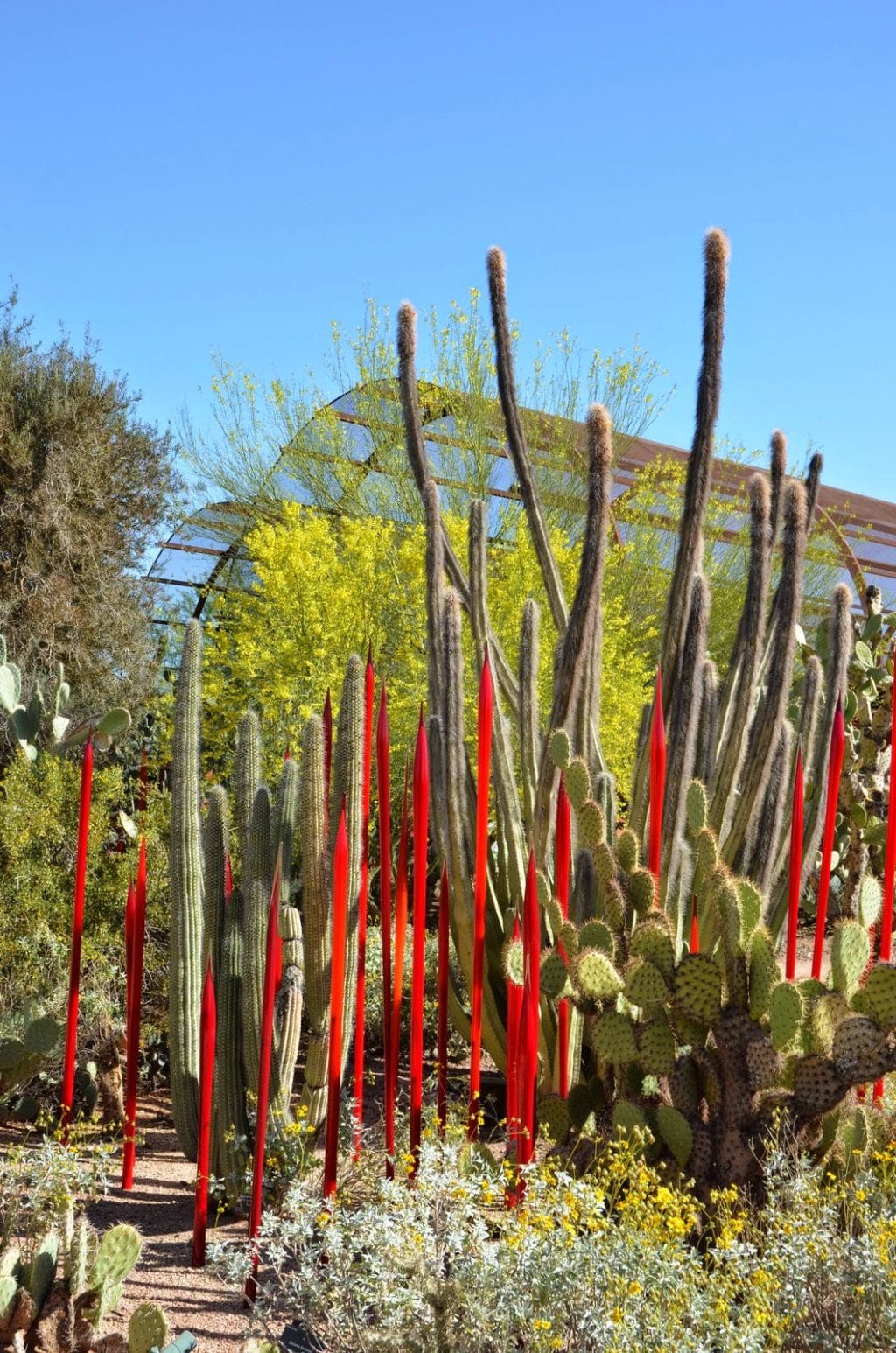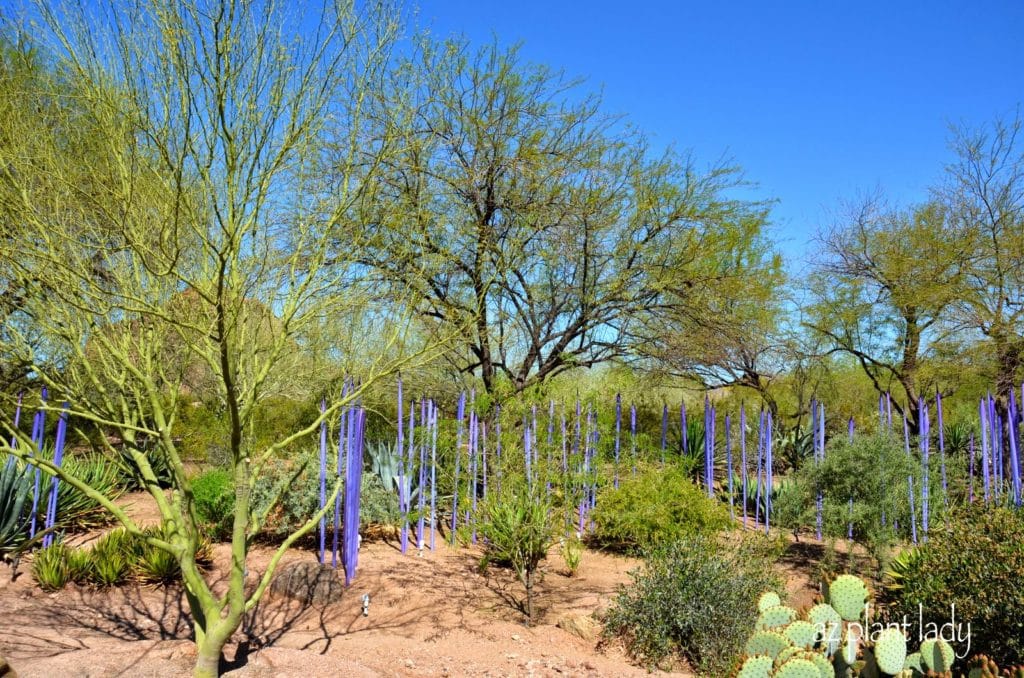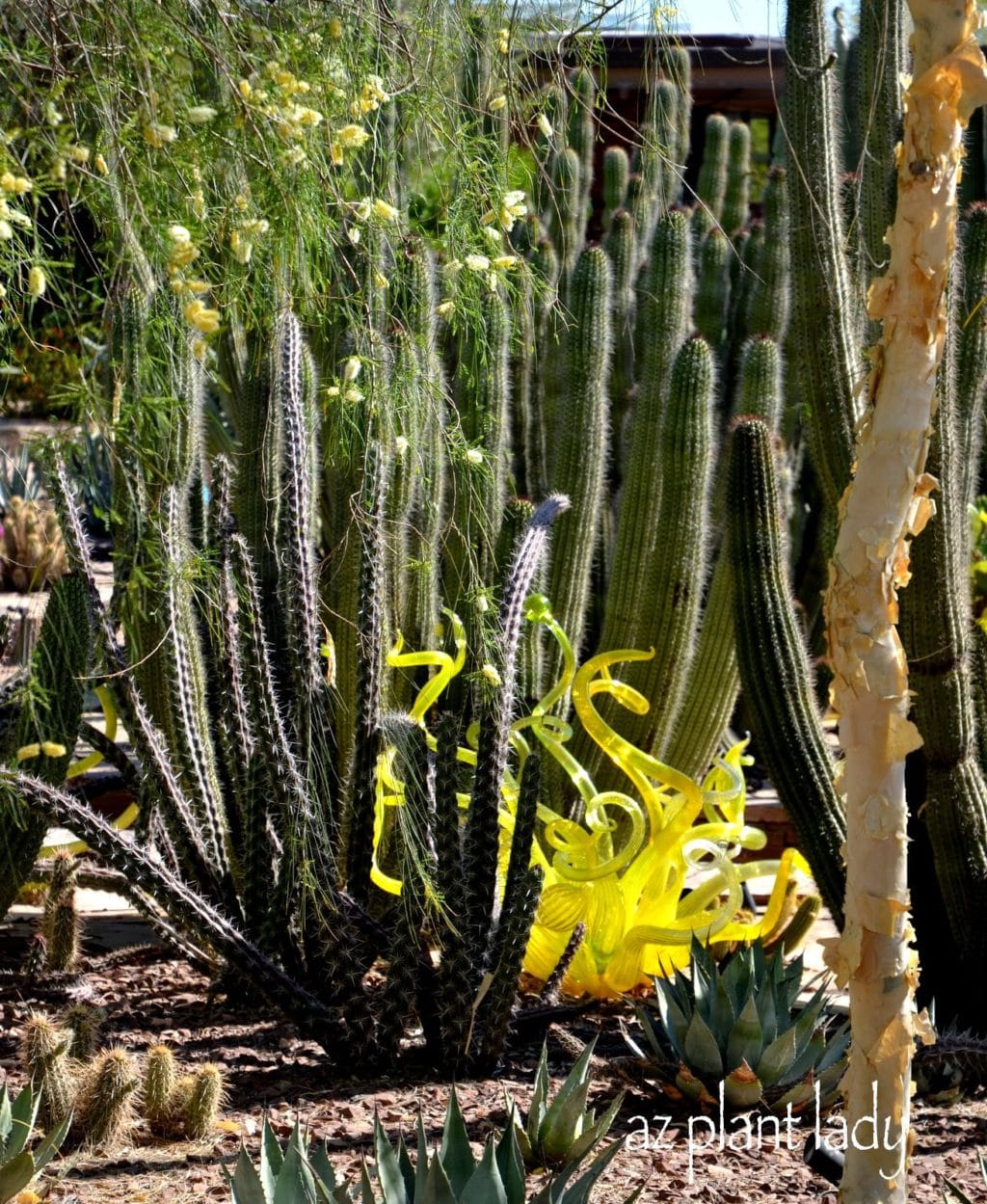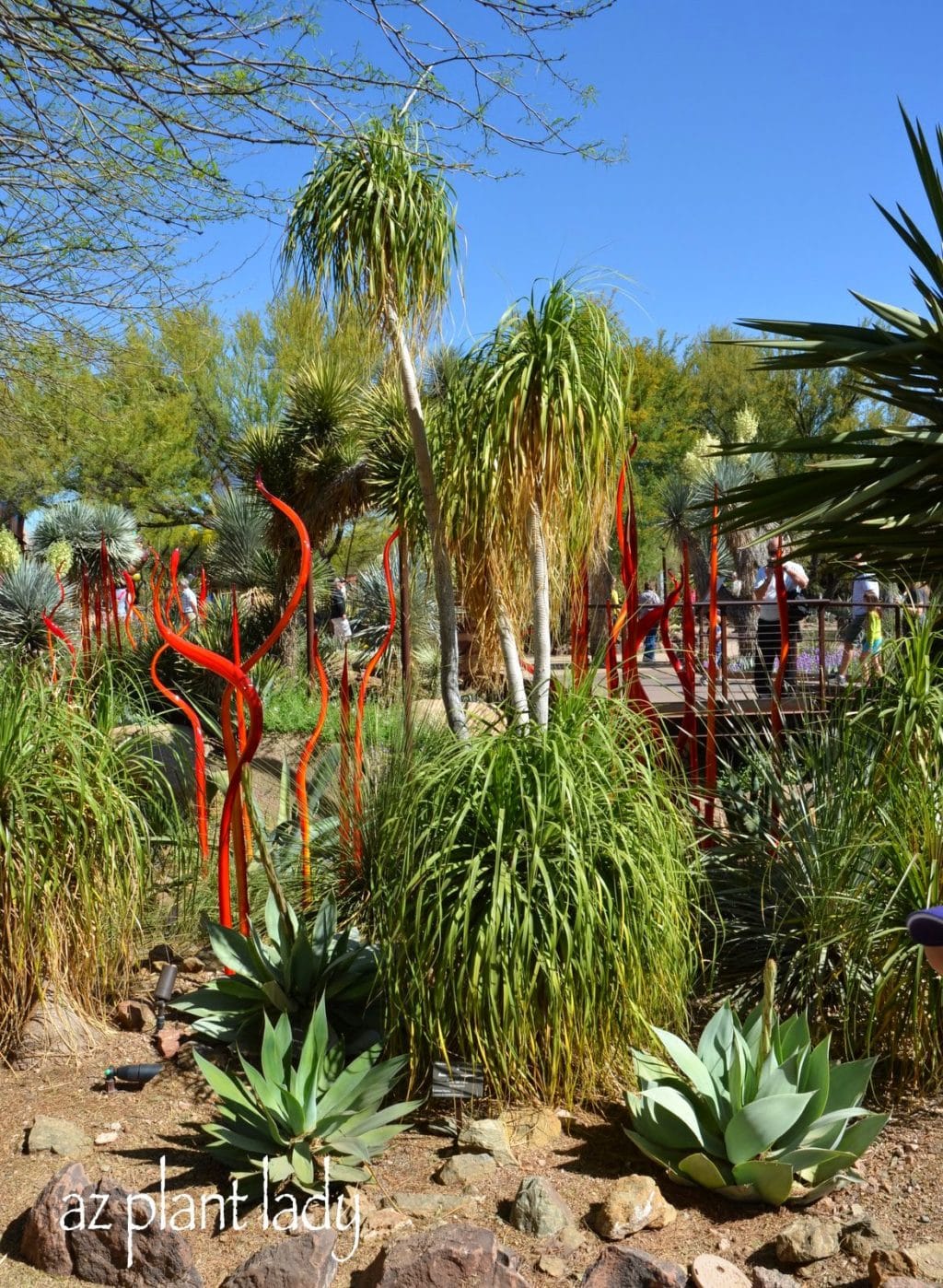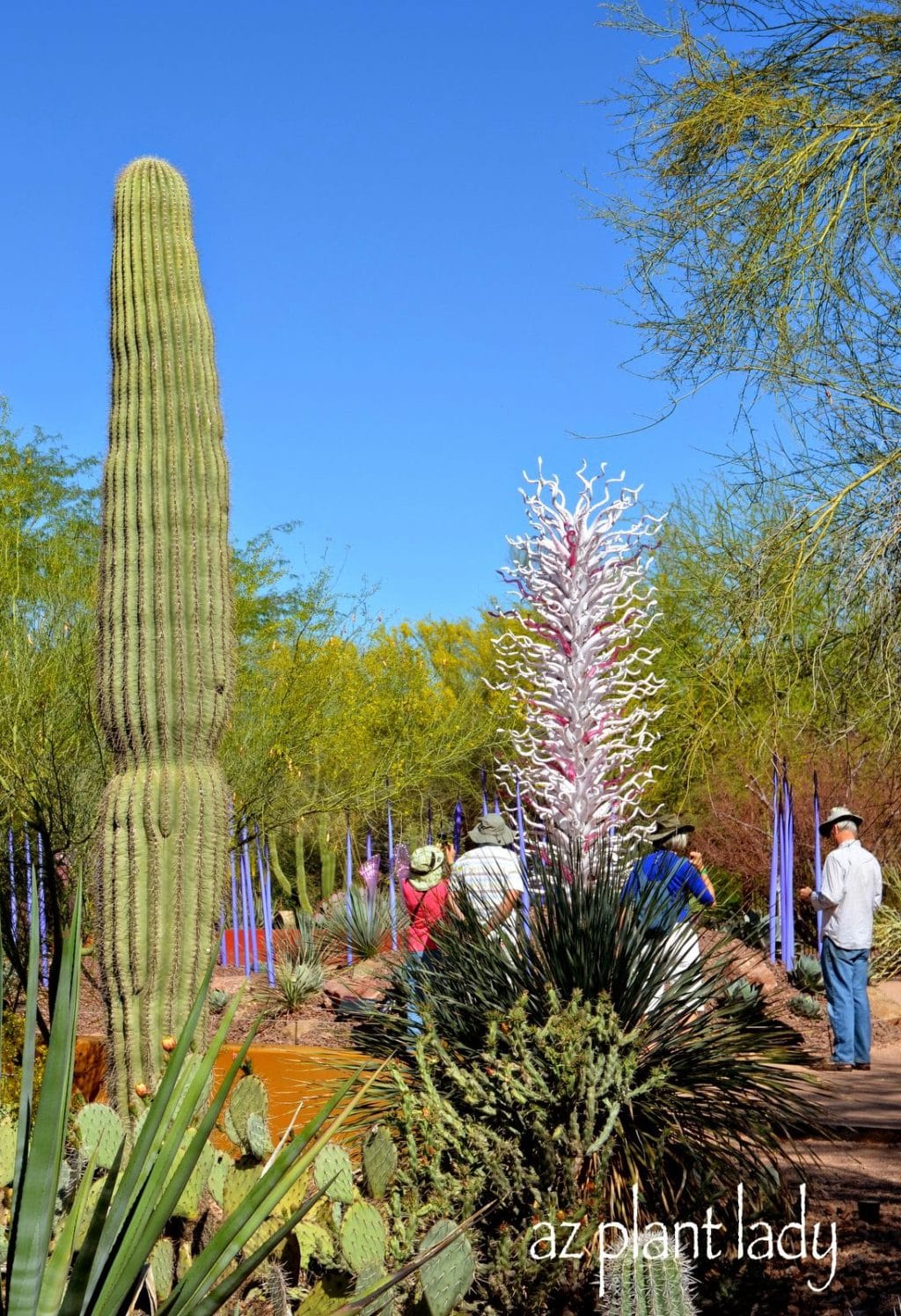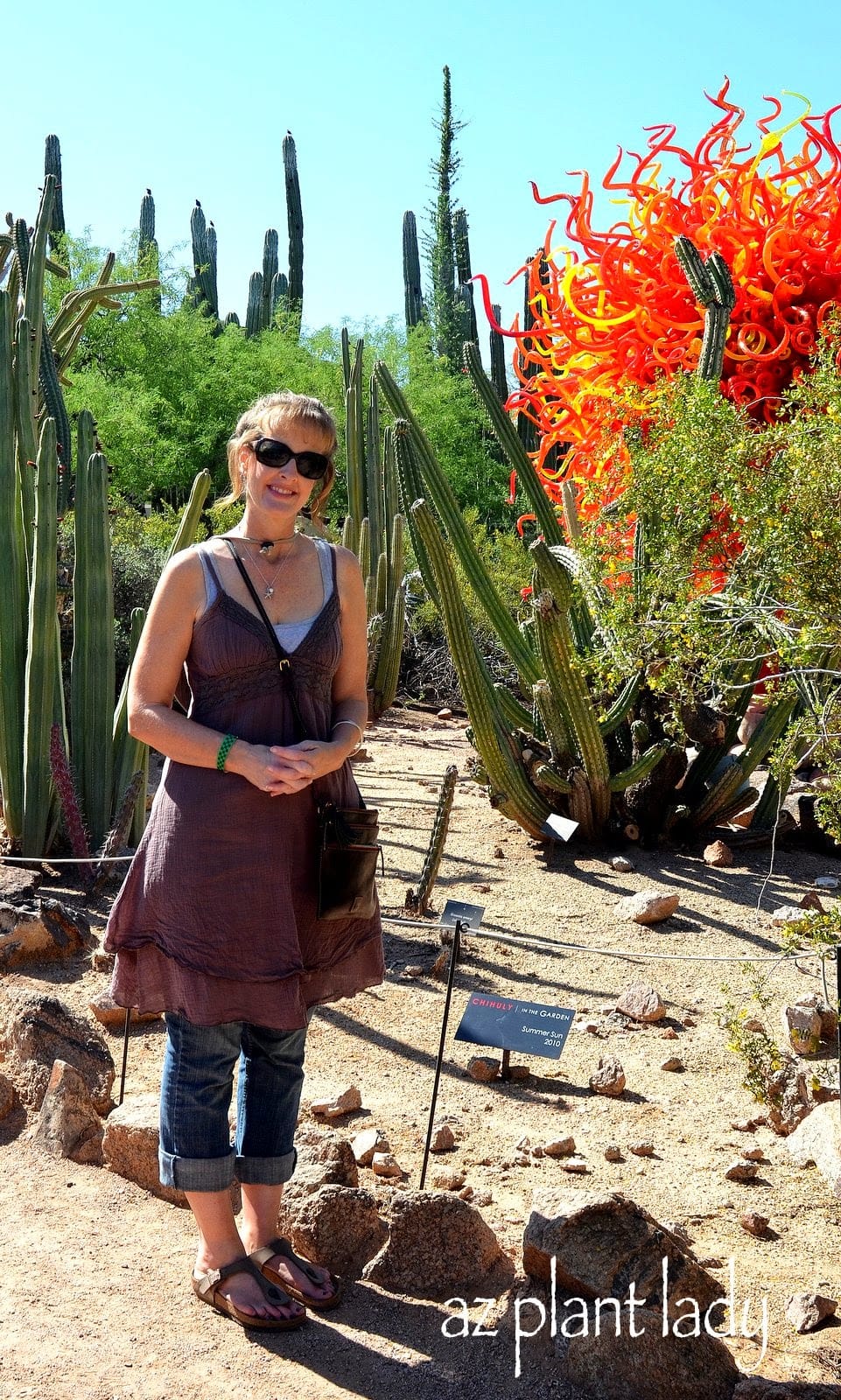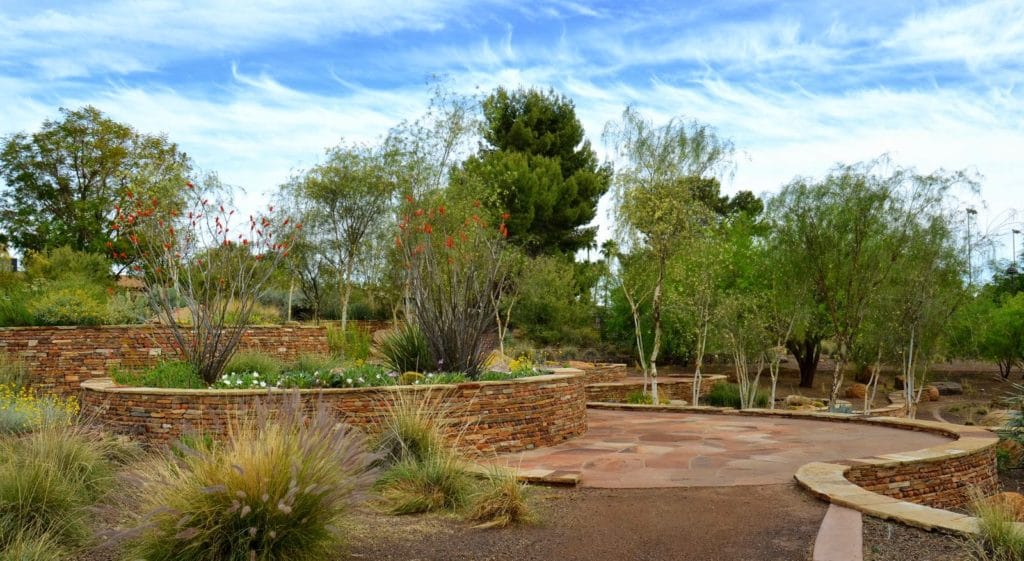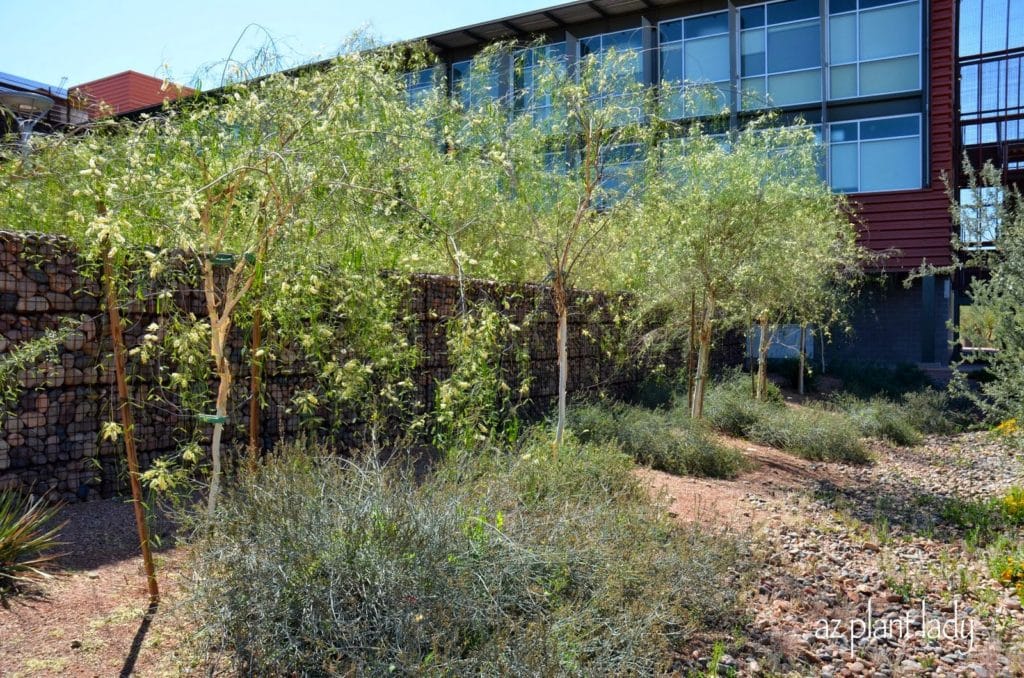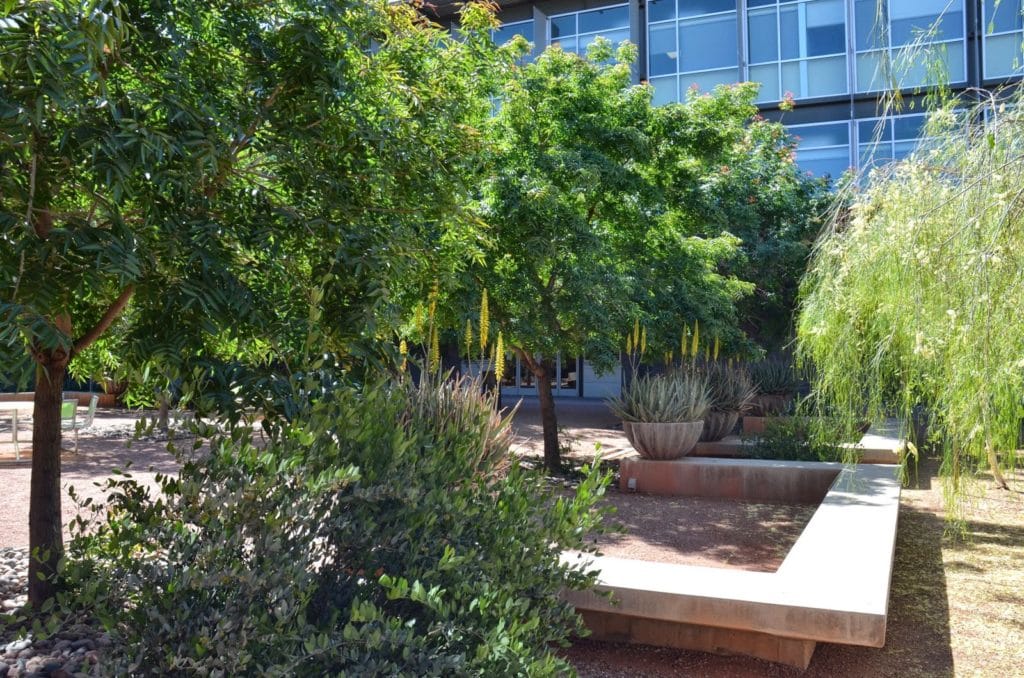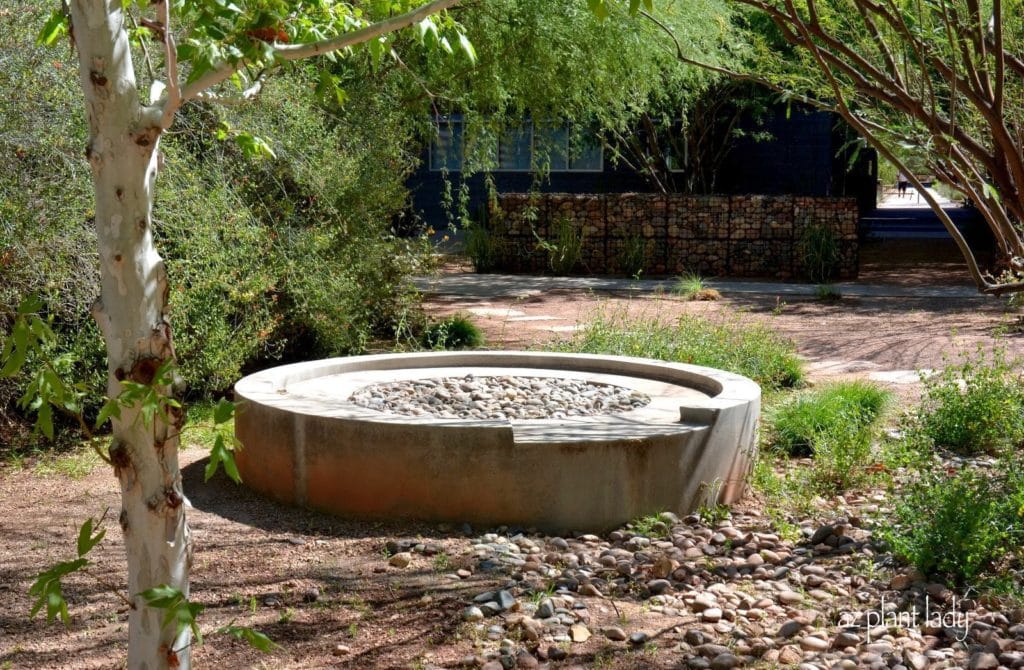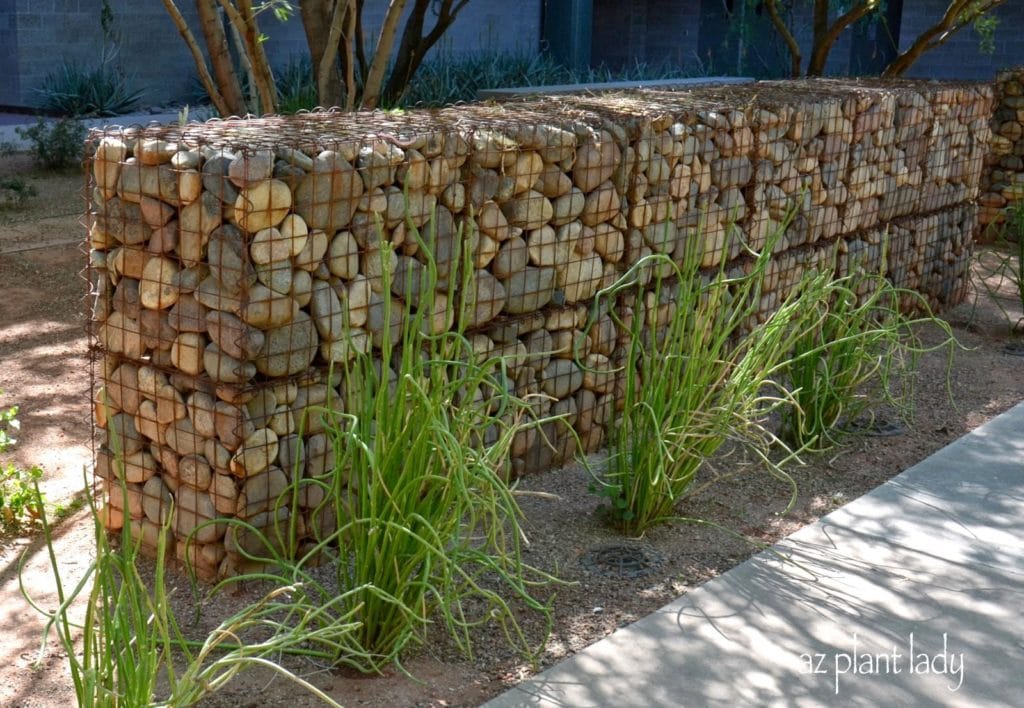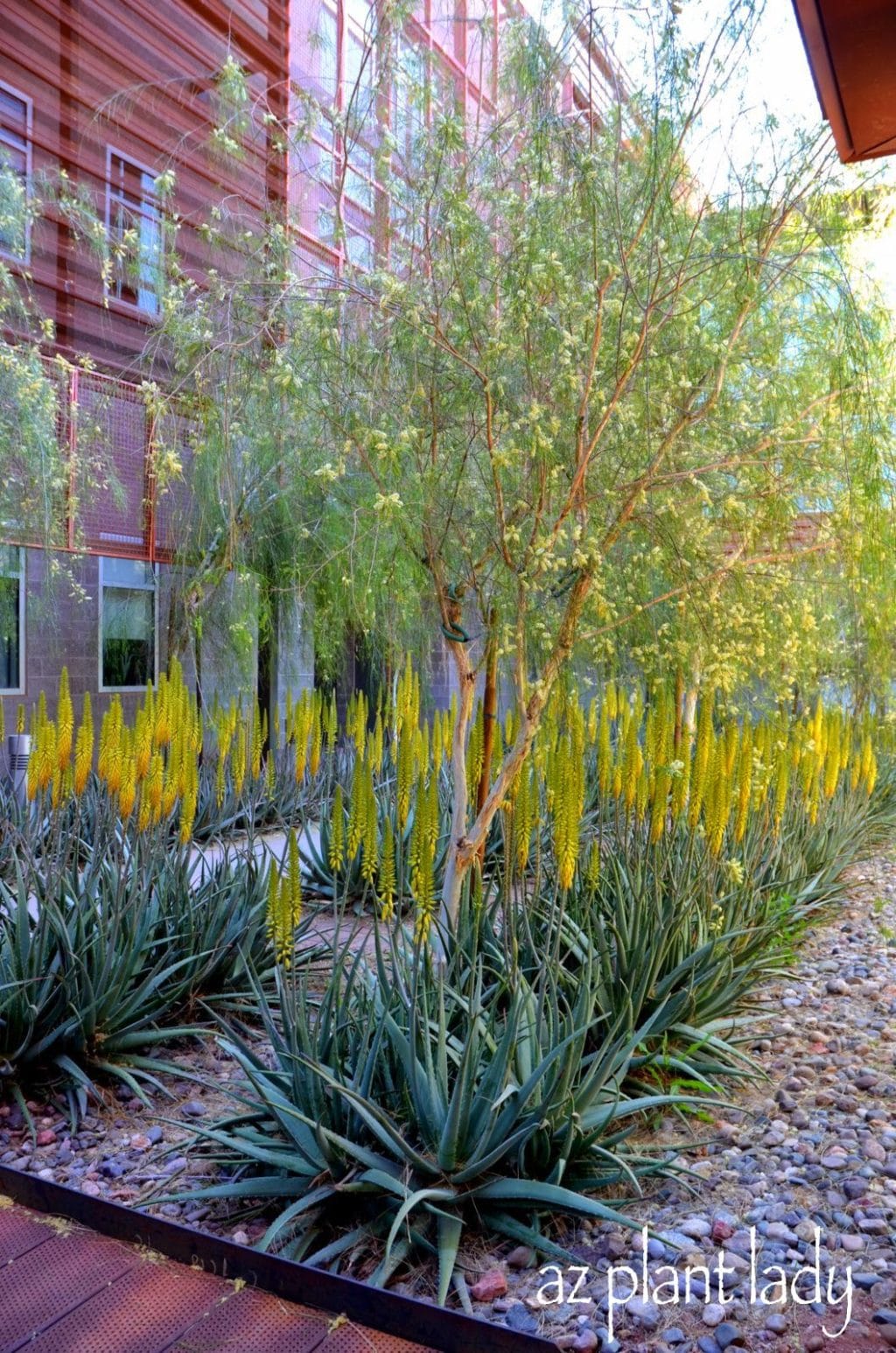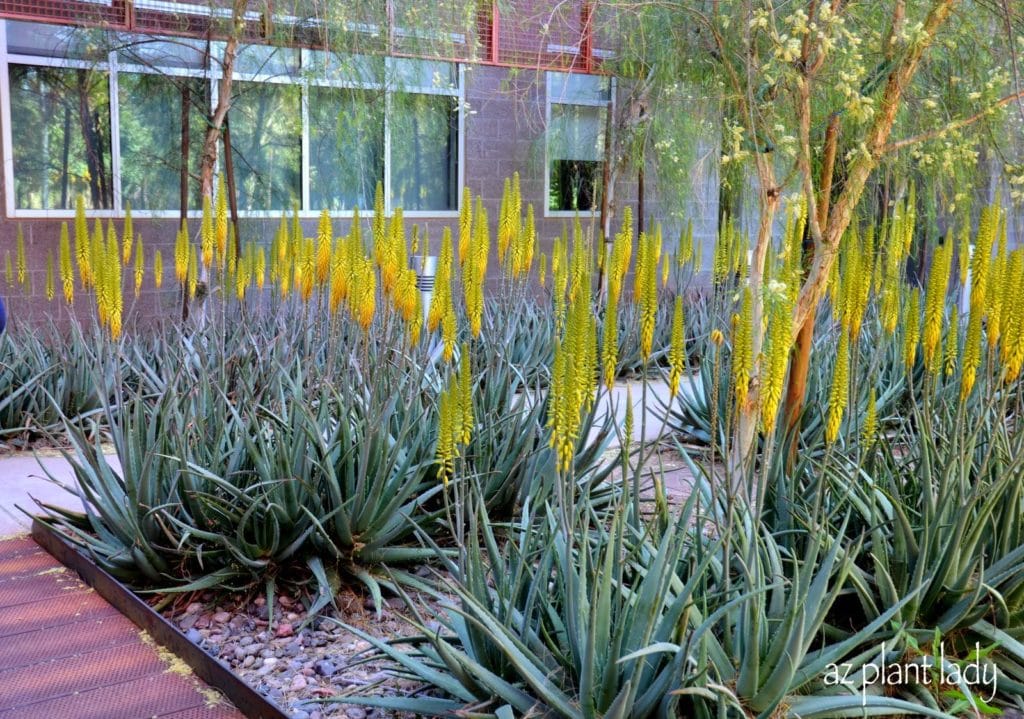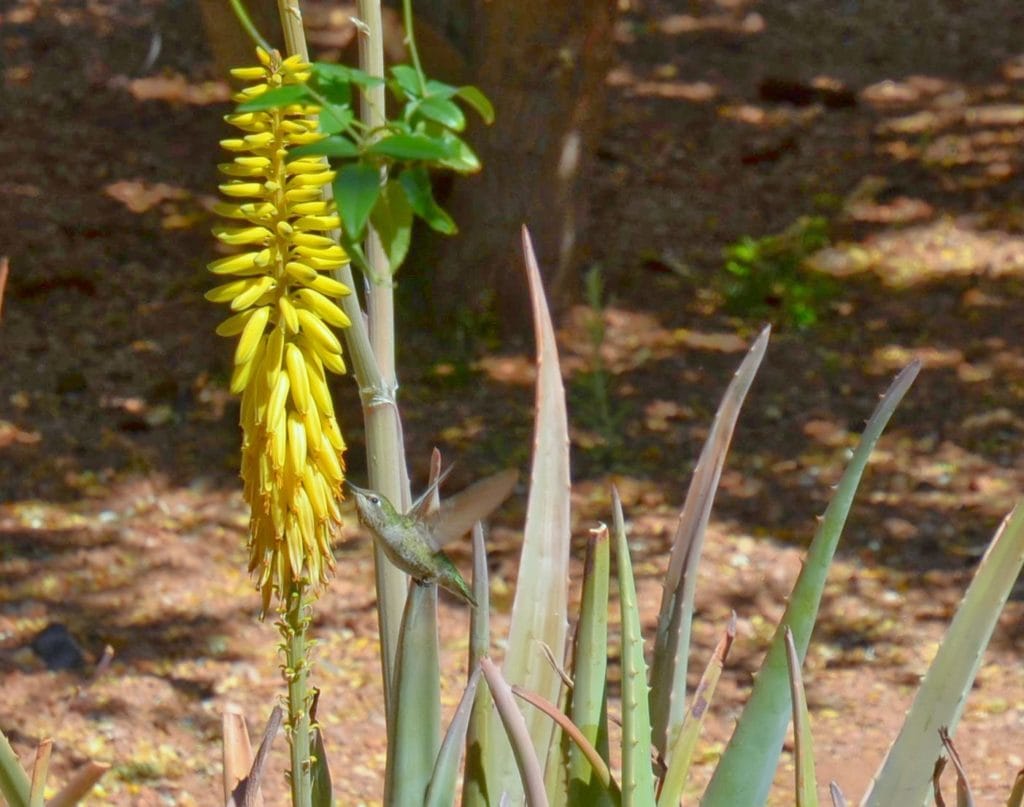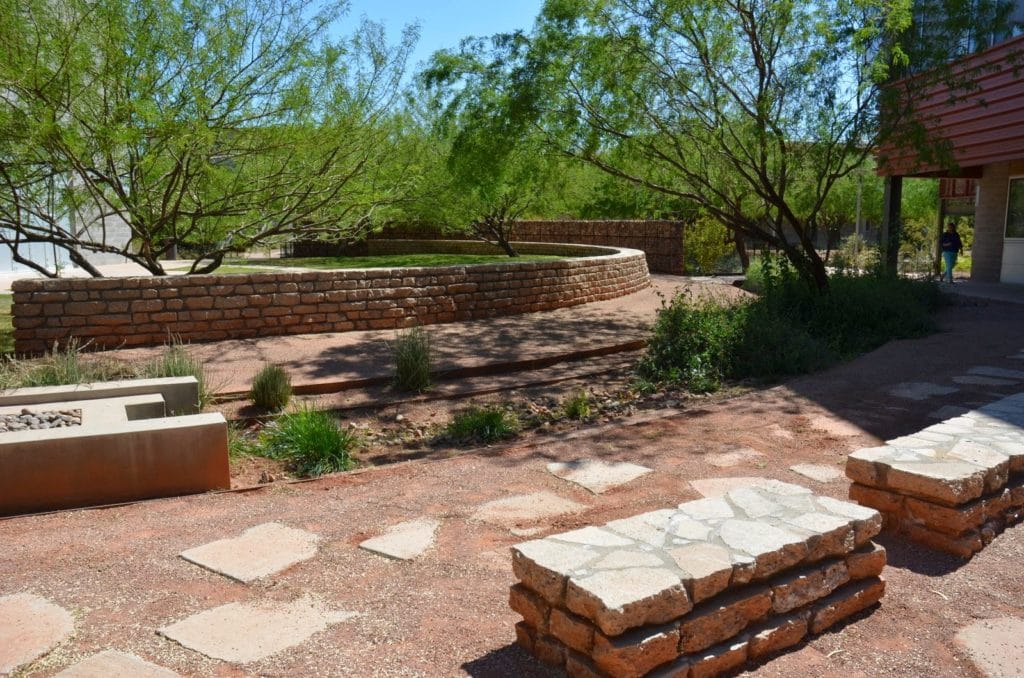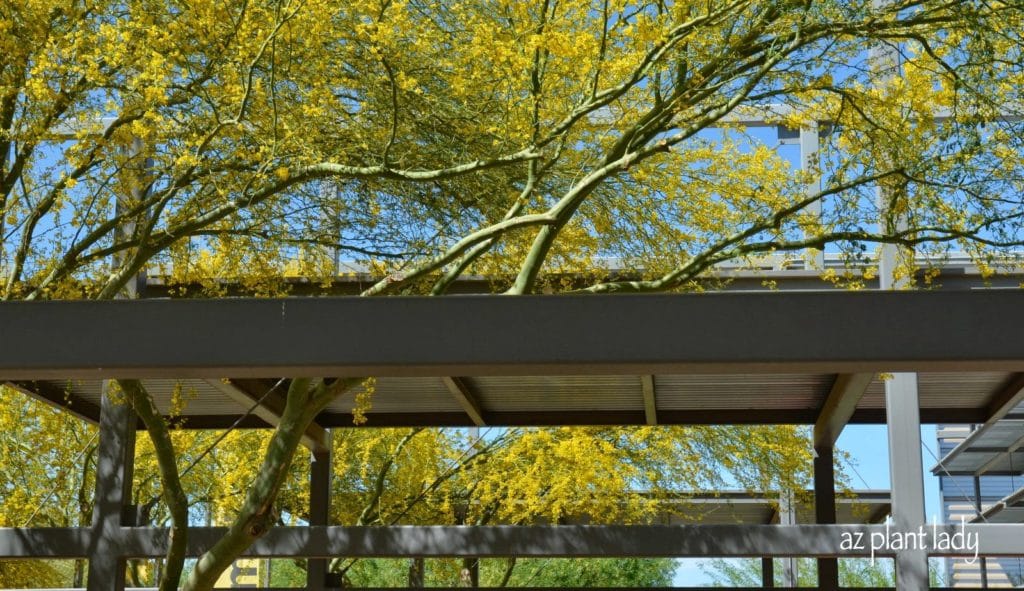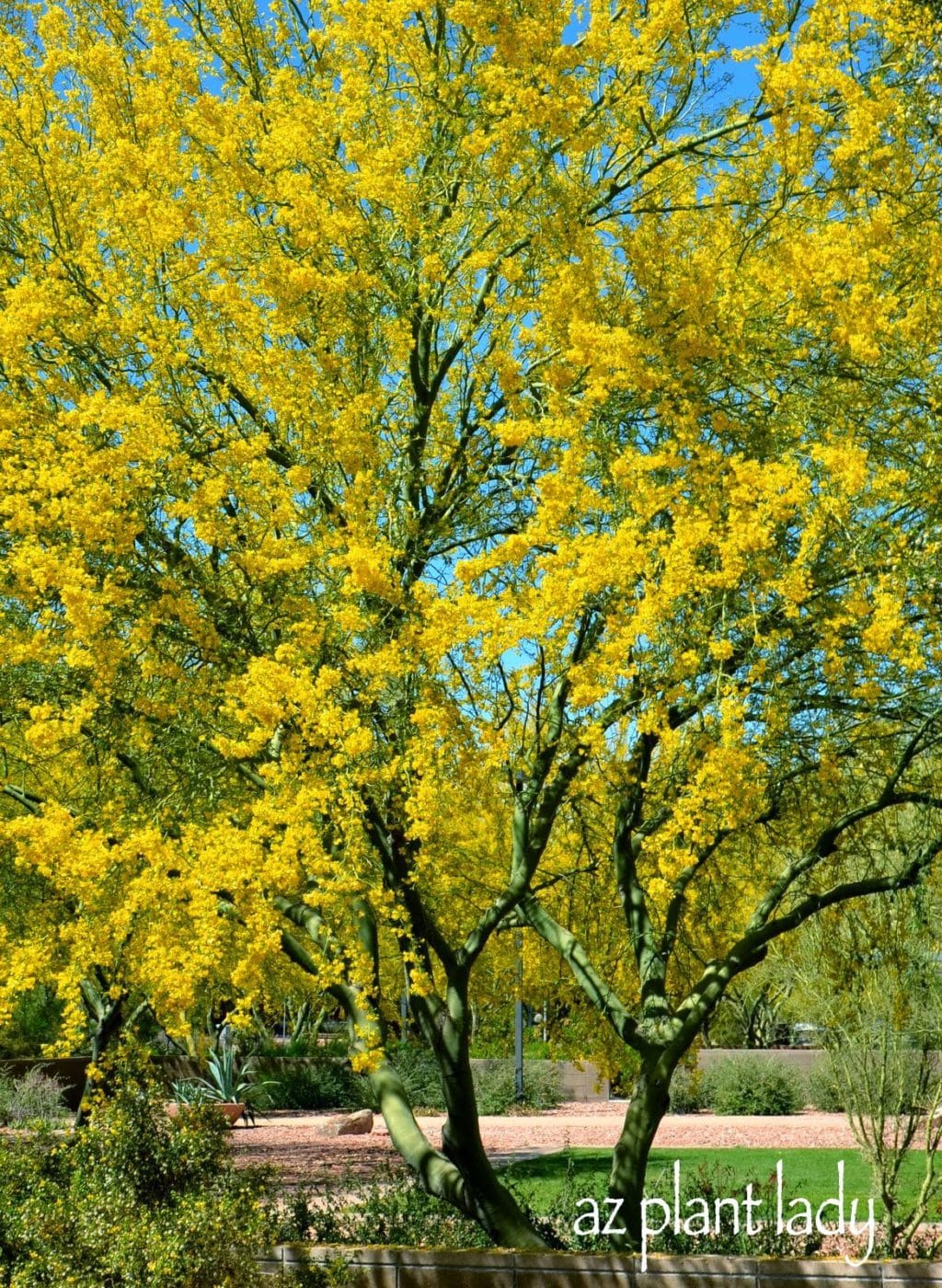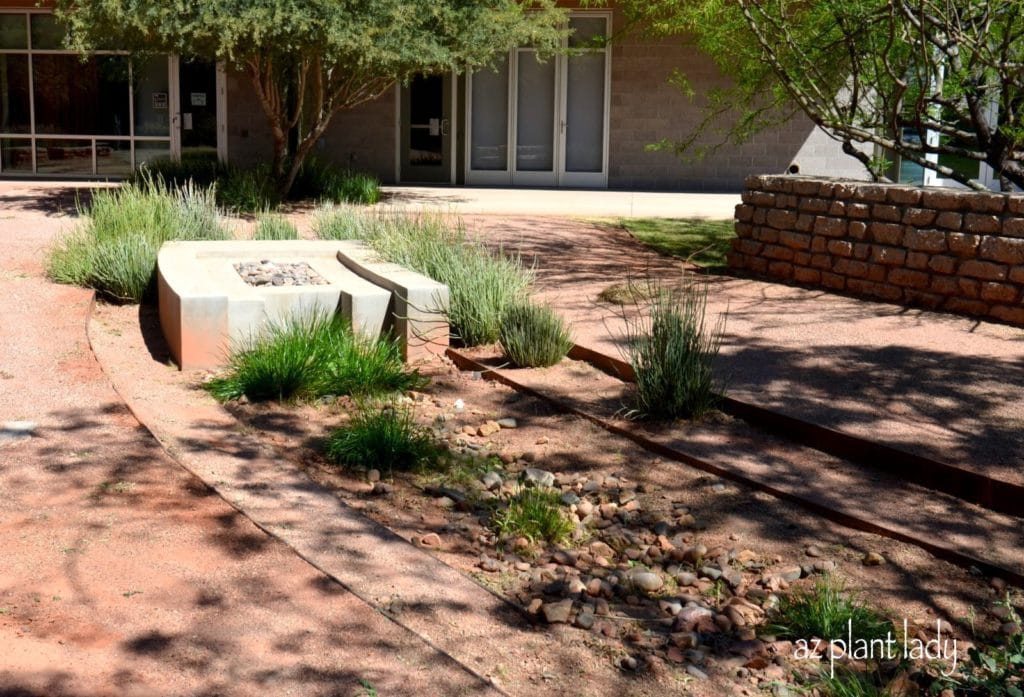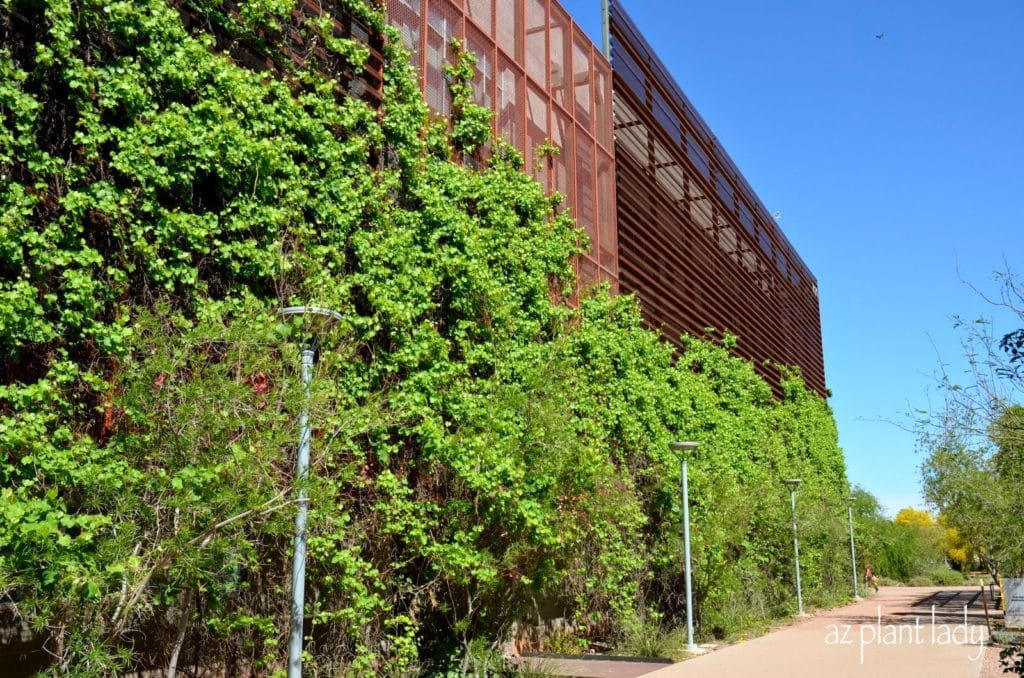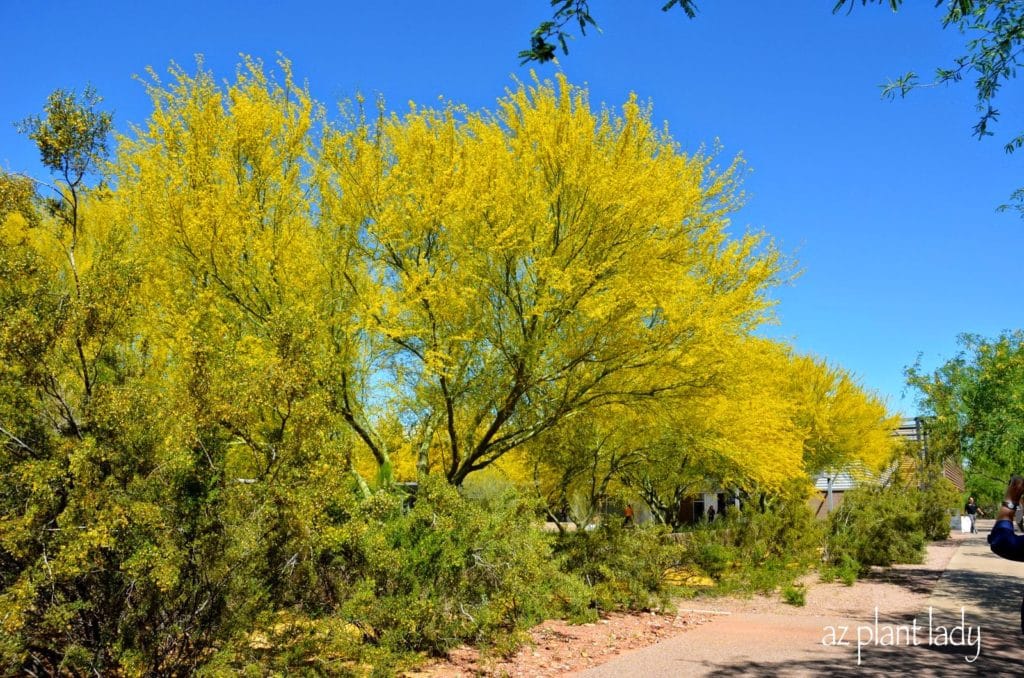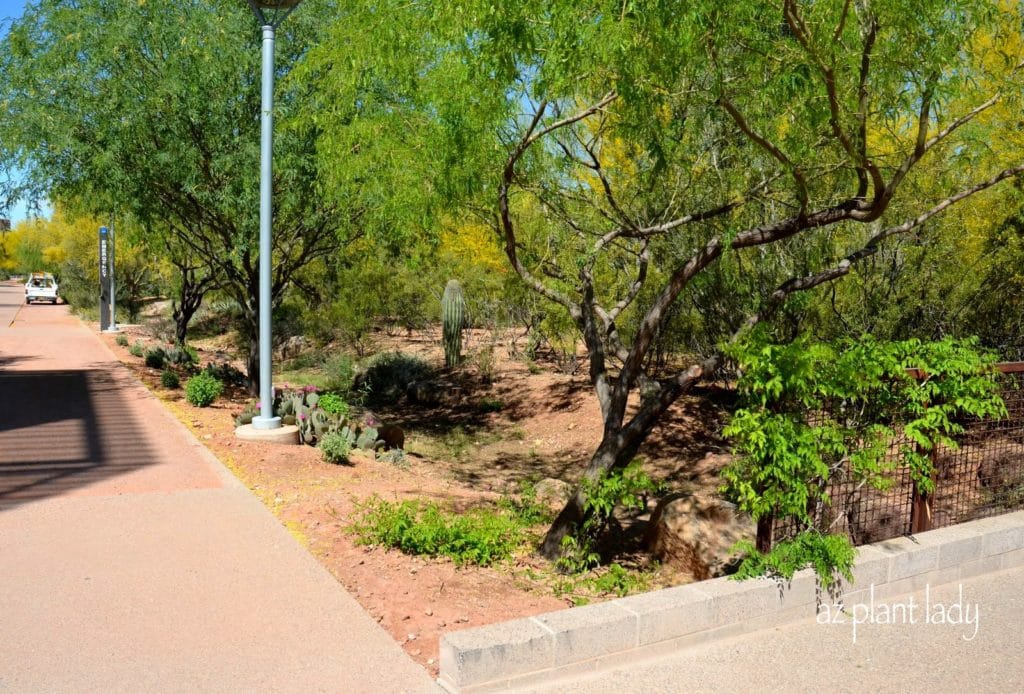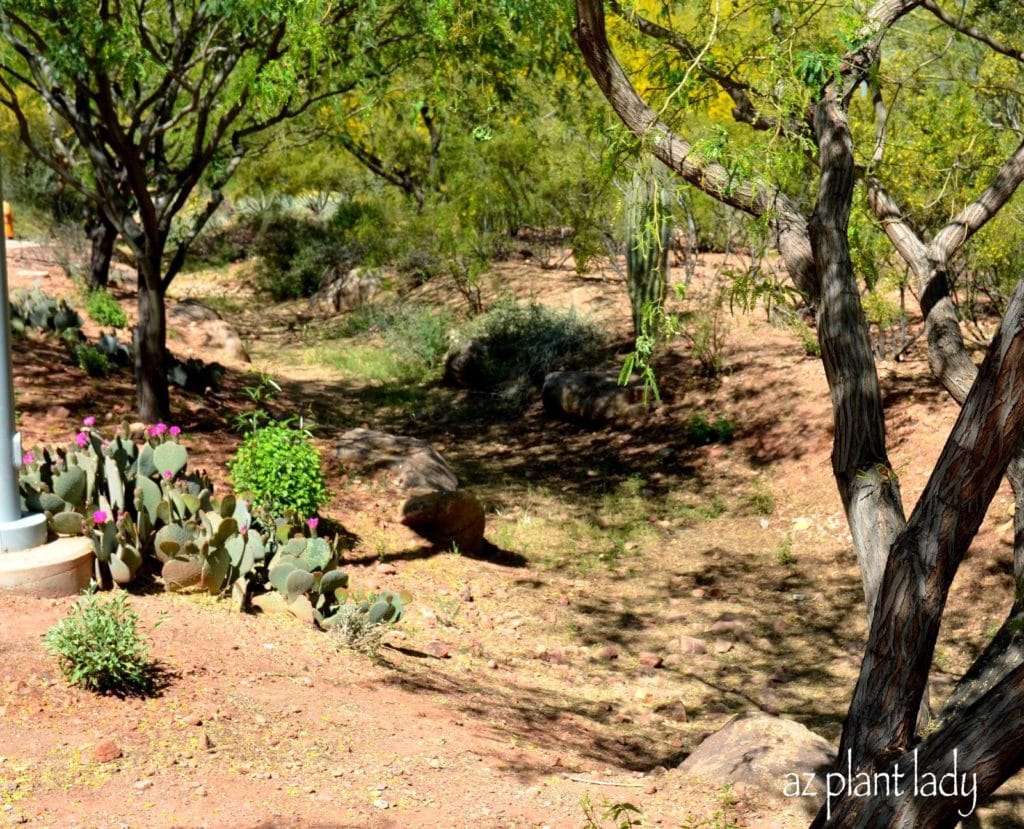
Revitalizing a Desert Landscape An Outdoor Renovation Story
Desert landscape beauty? Yes please! Have you ever renovated the interior of your house? Seeing the old, outdated elements peeled away and replaced with new paint, flooring, etc. can leave you feeling refreshed and even excited. Well, I get to do that with outdoor spaces, assisting clients with already established desert landscapes, create an updated look. The key to this is NOT to tear everything out and begin from scratch. Deciding what should stay and what we should remove and replace is a delightful puzzle.
There is immense satisfaction from assisting people in crafting an appealing desert landscape, especially when I have the opportunity to revisit the site several months later to witness the plants’ growth. I recently had the chance to return to a desert landscape I designed, precisely one year after its completion, and I was thoroughly pleased with the outcomes.
The Desert Landscape ‘Before Picture’
I’d love to show you photos of the finished product. Here is what it first looked like.
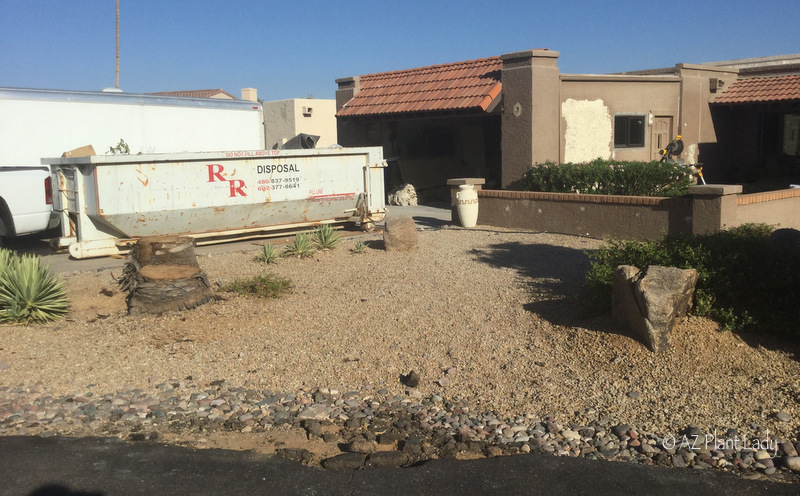
Crafting a New Desert Landscape
The interior of the house is also undergoing renovation when I first visited. The front yard consists of two palm tree stumps, a few agave, overgrown gold lantana, and boulders.
The landscape rock was thinning and mixed in with the river rock. Unfortunately the asphalt from the street was crumbling away.
I identified the parts of the landscape that I could reuse, including the boulders and the gold lantana. Clearly, there is potential for re-purposing the river rock. We removed everything else.
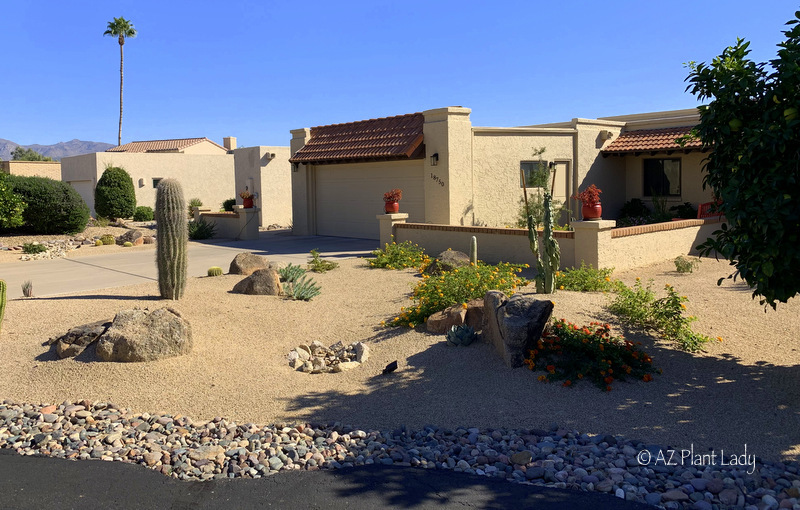
Combining Old and New
To establish the framework for the new desert landscape elements, we added extra boulders. We improved the existing contouring by raising the height of the mound and creating a swale in the front center. The circular collection of rip-rap rock serves to mask the opening of the end of a French drain which helps to channel water from the patio.
Simple Yet Impactful
We placed a saguaro cactus and a totem pole ‘Monstrose’ (Lophocereus schottii ‘Monstrose’). This placement creates vertical interest. Next we pruned the existing gold lantana severely to rejuvenate them and added others to establish visual continuity. We incorporate other succulents like artichoke agave (Agave parrying var. truncata) and gopher plant (Euphorbia biglandulosa) to introduce texture through their unique shapes.
Removing the existing river rock, we then washed it off, and replaced it, along with fixing the crumbling edge of the street. This helped the landscape blend seamlessly with the natural curves of the desert.
Anchoring Corners for Desert Landscape Curb Appeal
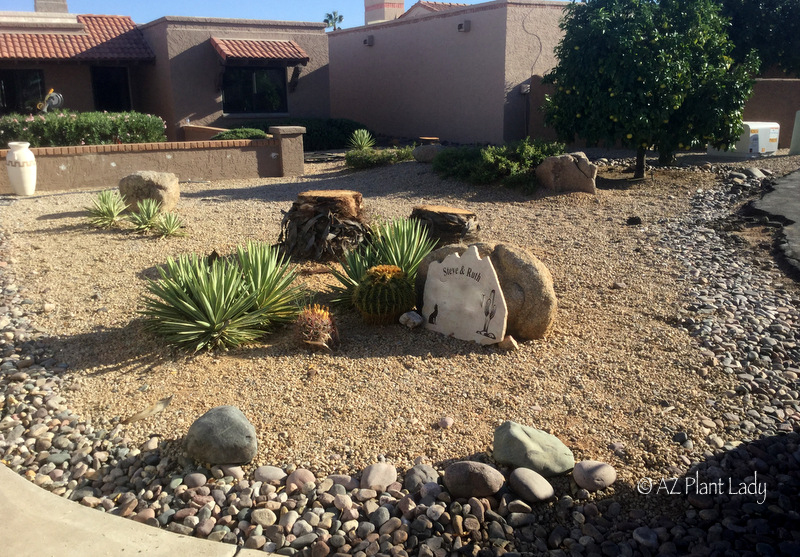
Anchoring the corners with a grouping of plants is a very simple way to enhance the curb appeal of a home. This collection of volunteer agave and old palm tree stumps weren’t doing this area any favors.
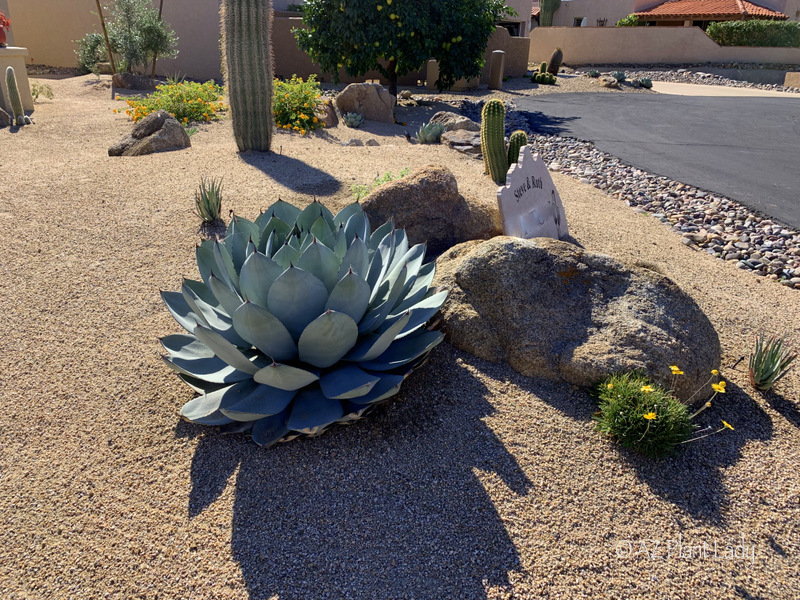
We elevate this corner slightly, forming a gentle rise in elevation. We added a large boulder to the existing one, and we transplanted a beautiful, specimen artichoke agave from the owner’s previous residence to this spot. Angelita daisies (Tetraneuris acaulis) will provide year-round color as they fill in, and we planted ‘Blue Elf’ aloes to introduce a delightful splash of color.
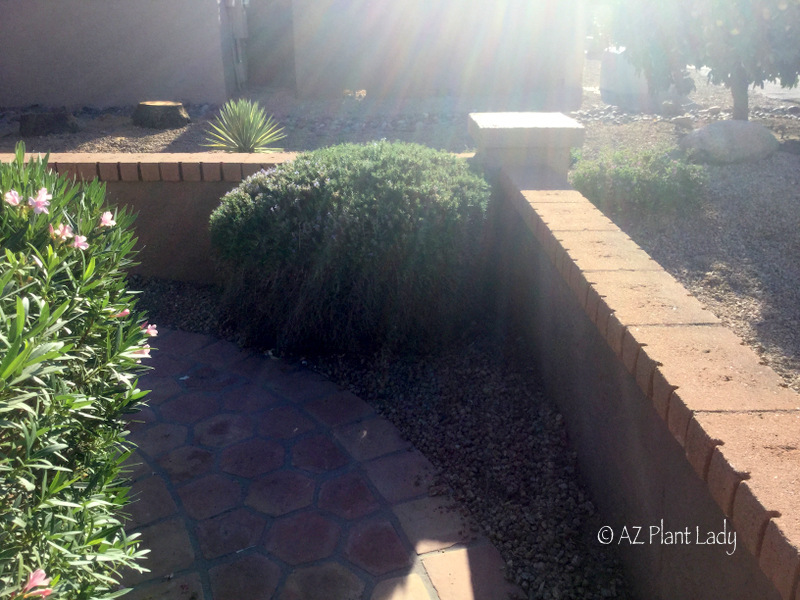
A Welcoming Front Entry
Entering the front courtyard, you’ll notice the corner occupied by an overgrown rosemary shrub. We removed the dwarf oleander shrubs because they were too large for the smaller scale of this area..
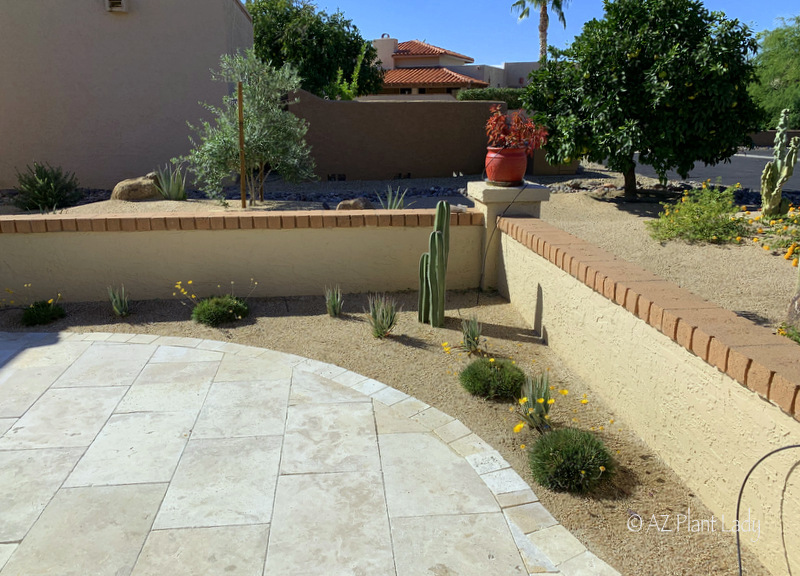
Mexican fence post cactus (Pachycereus marginatus) helps to anchor the corner and will grow at a moderate rate, adding more height as it grows.
We can guarantee year-round color with angelita daisies and ‘Blue Elf’ aloe. These plants won’t outgrow this area.
Transforming a Lackluster Space
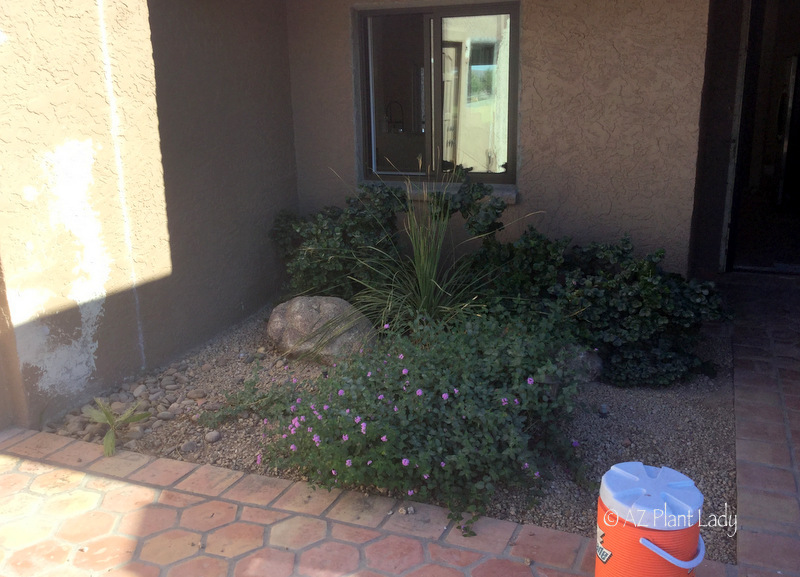
Moving toward the front entry, this area is somewhat underwhelming. The natal plum (Carissa macrocarpa) adds a pleasant green backdrop. It is thriving in the shade. The Dasylirion succulent should never have been planted here. It needs full sun to look its best.
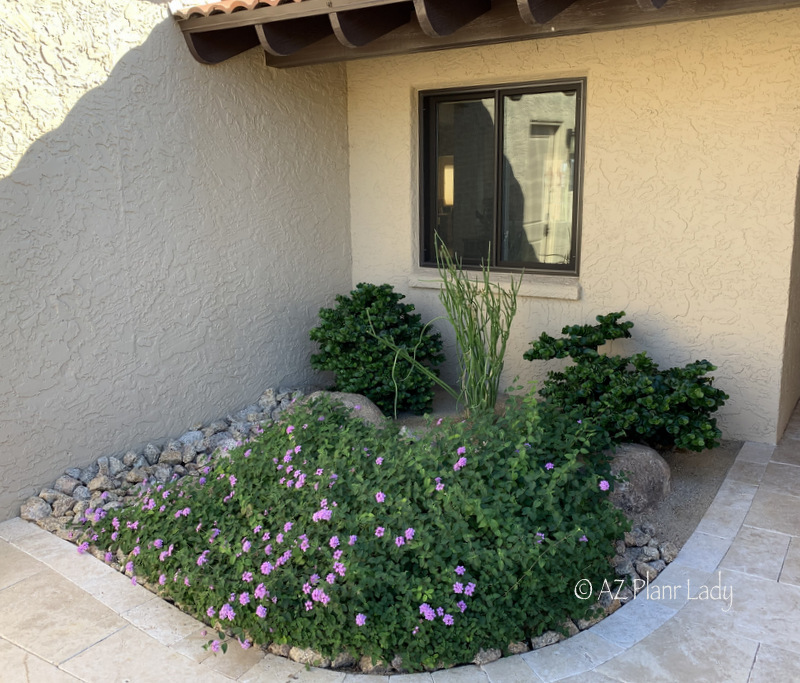
The solution in this area is quite simple. Pruning back the natal plum to a more attractive shape makes them an asset. A lady’s slipper (Pedilanthus macrocarpus) adds height and texture contrast and will grow in the bright shade. We kept the trailing purple lantana (Lantana montevidensis), for the color that it provides. Rip rap rock is placed to add some interest at the ground level.
Tying Together Separate Spaces

In the backyard another old rosemary shrub was removed from the corner. It is replaced with ‘Blue Elf’ aloe and angelita daisy, repeating the same planting from the corner area in the courtyard, helping to tie these separate areas together.
Creating Cohesion
Aloe vera (Aloe barbadensis) are along the shady side of the house where their spiky shape creates interesting shapes. The key to keeping them attractive is to remove new growth around the base as it occurs.
A Backyard Transformation
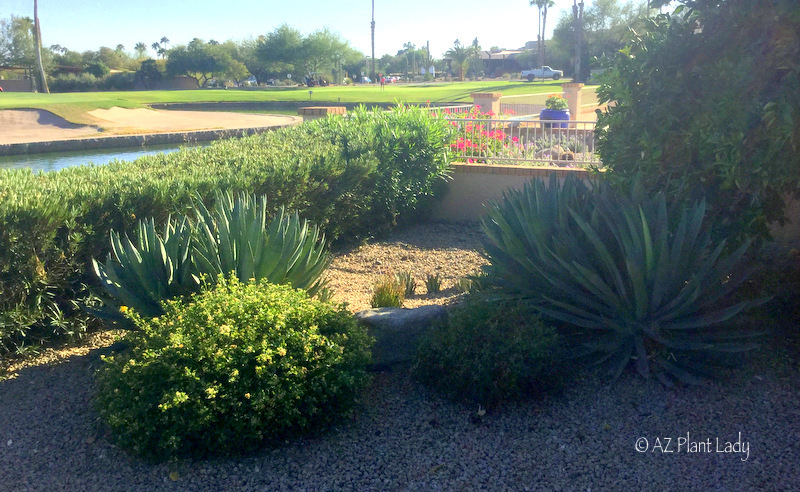
The corner of the backyard is a very high-profile spot and faces the golf course. The homeowner’s wanted to get rid of the dwarf oleander hedge to improve their view. Clumps of agave look slightly unkempt. Volunteer agave remain and grow. The gold lantana adds ornamental value. Same for the small ‘Firesticks’ (Euphorbia tirucalli ‘Sticks on Fire’).
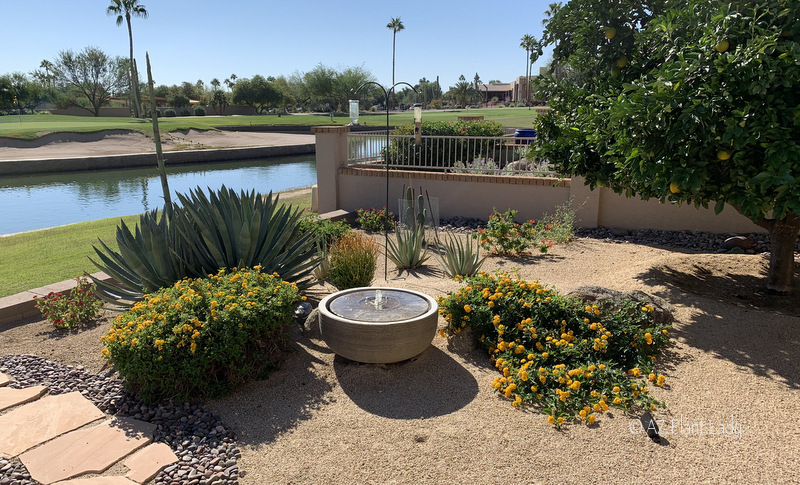
One of the clumps of agave was removed. This opened up this area and allowed us to add two aloe vera, which will decorate this corner with yellow blooms in winter and spring. The existing gold lantana provides beautiful color spring through fall. The centerpiece of this group of plants is the water feature.
Enhancing Views and Aesthetics
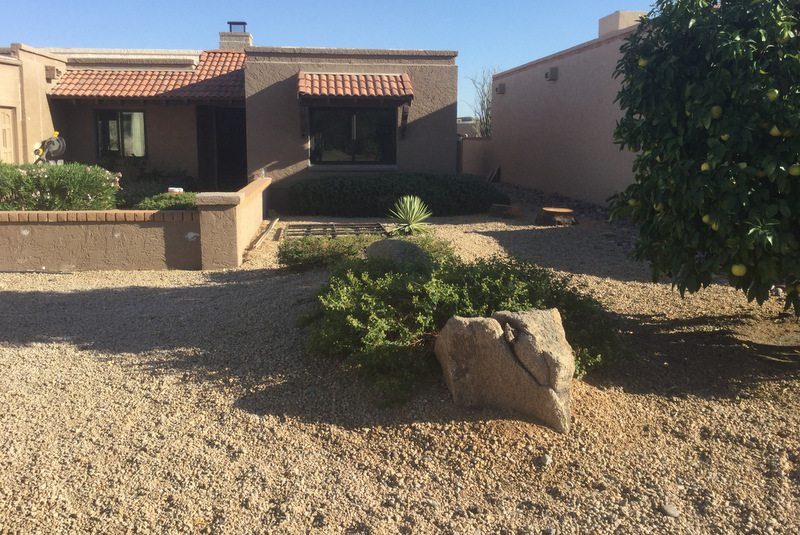

It’s been over 20 years that I’ve been working on landscapes. Watching the transformation is a joy. I love being a part of it and combining the old with the new for a seamless design.
Thank you for allowing me to share this particular project with you!
Looking for Inspiration: Low-Maintenance Desert Landscapes


